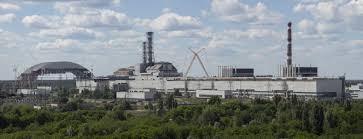The Chernobyl Nuclear Power Plant: A Legacy of the Past

Introduction
The Chernobyl Nuclear Power Plant, located in Ukraine, is infamous for the catastrophic nuclear disaster that occurred on April 26, 1986. This incident not only resulted in a significant loss of life but also had lasting environmental and health impacts that continue to be felt today. Understanding the history and ongoing developments related to Chernobyl is crucial for grasping the complexities of nuclear energy and its potential risks.
The Disaster
The Chernobyl disaster is considered the worst nuclear accident in history. During a late-night safety test, a combination of design flaws and operator errors led to an uncontrolled reaction in Reactor No. 4. The subsequent explosion released massive amounts of radioactive particles into the atmosphere, spreading across Europe. This event forced the evacuation of 116,000 residents from the Chernobyl Exclusion Zone and led to the establishment of a 30-kilometre radius around the site that remains largely uninhabitable.
Health and Environmental Impacts
Decades after the explosion, studies continue to investigate the long-term health effects on individuals exposed to radiation. Increased cases of thyroid cancer, particularly among children, have been widely documented. The United Nations Scientific Committee on the Effects of Atomic Radiation (UNSCEAR) has estimated that thousands of thyroid cancer cases can be attributed to the Chernobyl accident, although the full extent of health consequences remains disputed.
Current Situation
Today, the Chernobyl site is a mix of abandoned structures and a growing tourist attraction. With the construction of the New Safe Confinement structure over the original reactor, local and international efforts aim to secure radioactive materials and begin the long process of rehabilitation. During recent years, the Exclusion Zone has seen a resurgence of wildlife, leading to studies on how nature adapts in the absence of human interference.
Conclusion
The legacy of the Chernobyl Nuclear Power Plant serves as a powerful reminder of the potential dangers associated with nuclear energy and the critical importance of safety protocols. As Ukraine navigates its current geopolitical challenges, the site remains a symbol of the past’s unresolved issues and a focal point for future energy discussions. The lessons learned from Chernobyl continue to resonate globally, influencing nuclear policies and conversations about energy safety and environmental health for generations to come.
